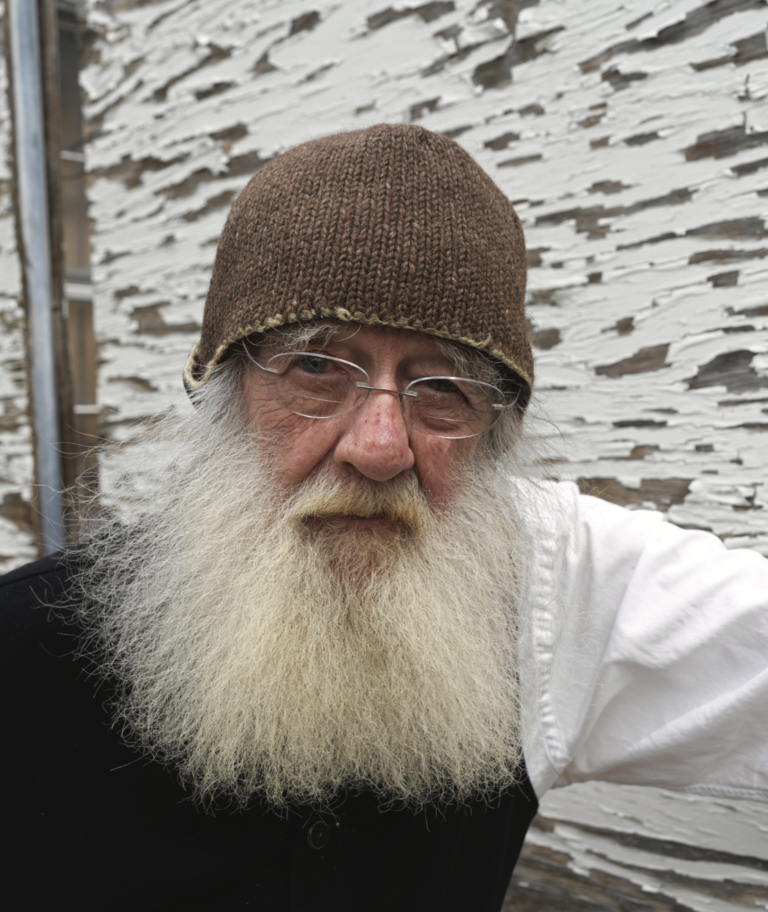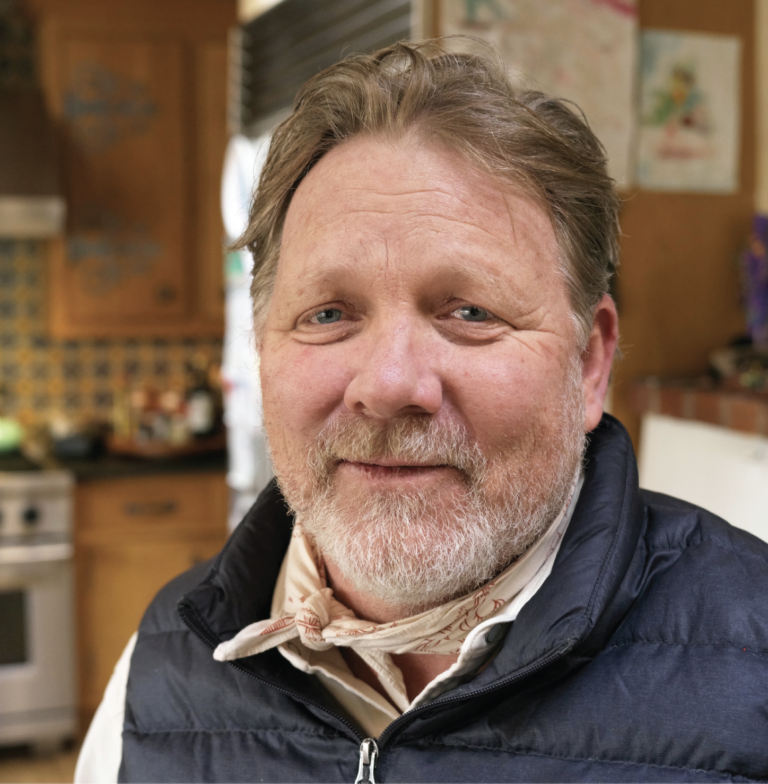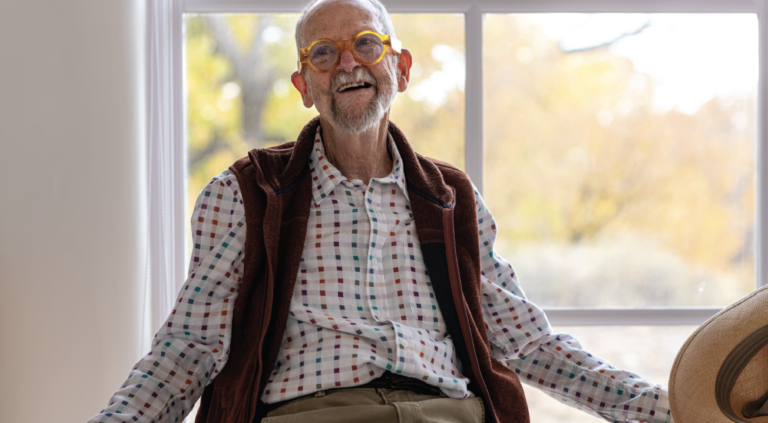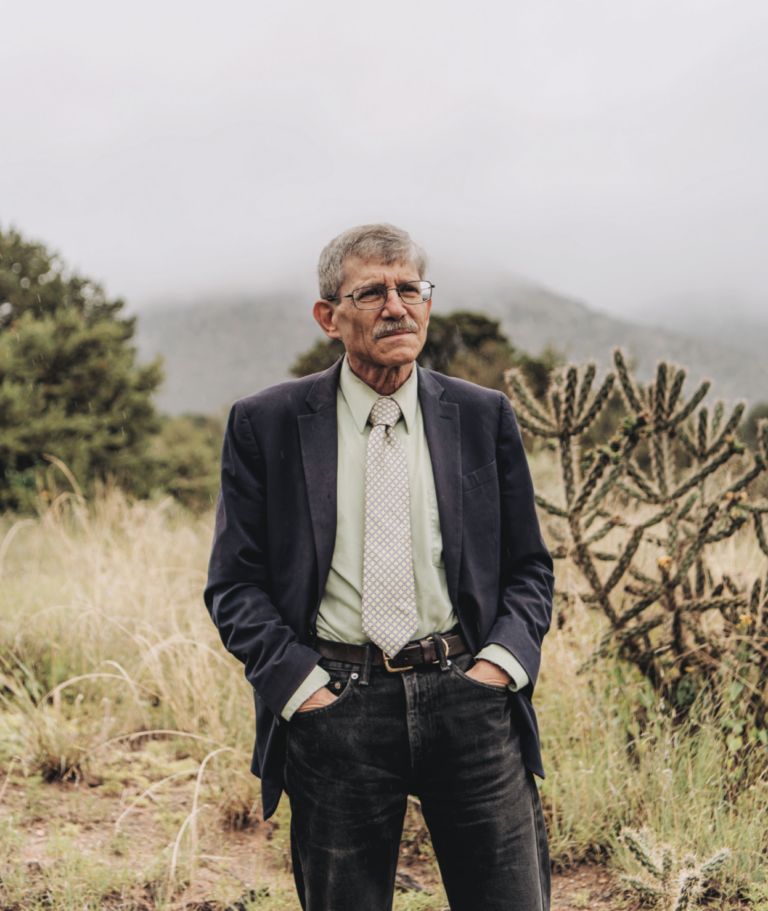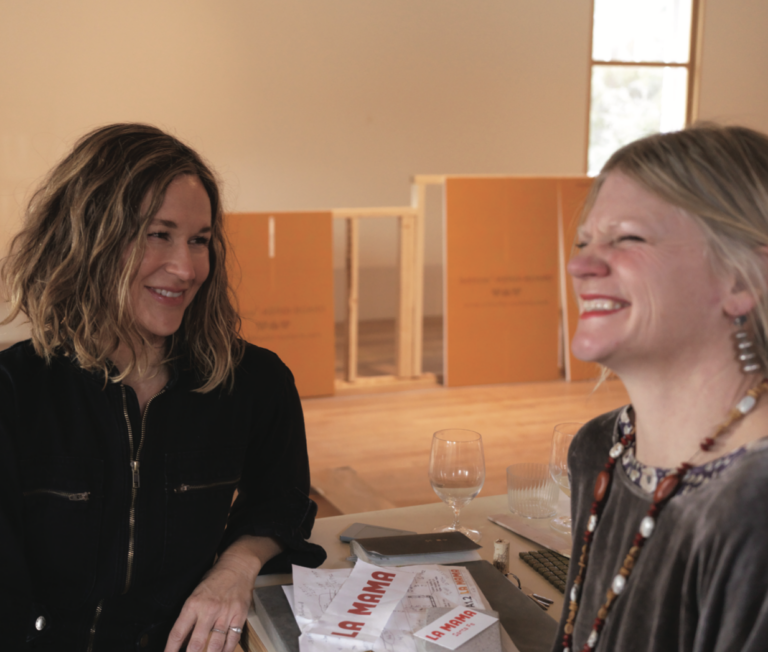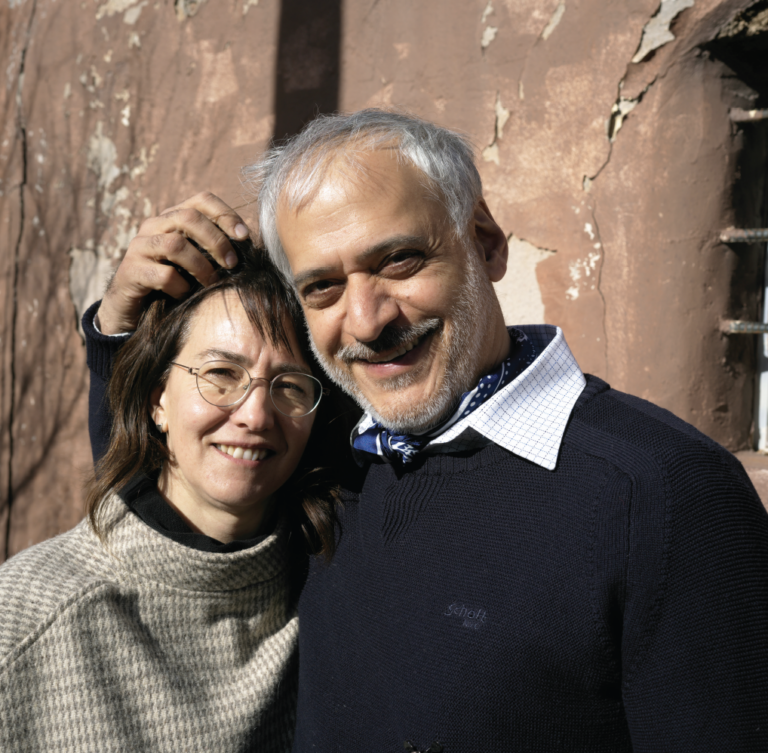WALK INTO PATRICK MCFARLIN’S STUDIO and you sense the ghost of the legendary painter Agnes Martin. Well, actually, he doesn’t think so. More about that later. But, in fact, you are in Martin’s original Galisteo studio, which he’s transformed into a gallery showing work from his long, storied career. That work right now is a series of portraits and visual obituaries of artists. Ghosts.
The studio is nestled among cottonwoods, right next to his historic adobe home he shares with Deborah Madison, the founder of Green’s restaurant, the author of 14 cookbooks, and America’s leading vegetable expert.
I dropped in to the studio to see what was happening at Agnes’s old place.
It must be intimidating working in Agnes Martin’s studio.
The studio definitely has Agnes’ vibe. Lots of straight lines. But, you know, this place didn’t look like this when she was here. It was super rustic.
In the middle of the wall there was a T-square device built right into the plaster, with a bar on pullies, so she could do all of those straight lines. She did lots of important work in here. In any case, I was lucky to find this spot right next to my house.
Who inspired you to become a painter?
Mrs. Marshall. She was my high school art teacher. She explained Picasso and Pollock, and would do radical things like let us go paint in a field.
What about painters?
I love the California painters. I love Joan Mitchell. I love Philip Guston. You know, Pollock came in and kicked out the jams in his own way and changed it all. Then Guston came along and said, I’m tired of all of this purity. Barnett Newman and all of these intellectuals thinking they were painting pictures of God. So I like that Guston got down and funky. But the paint is still beautiful.
Your work has been incredibly varied over the years.
Yeah, I do a lot of different things. People ask, Who is the real Pat? I’m not sure. My first show was in San Francisco in 1968 and was mostly band saw-carved sculpture. I paint, I draw, I do portraits, I do landscapes, I’ve designed books, I’ve worked with Stags Leap Winery, I’ve done graphic design.
You are known for Pat’s Downtown Club.
That was great. Folks would come to my studio and we’d do a portrait. It was, Come on by, we’ll paint your portrait. BYOB.
I worked on this project for four years painting over 300 portraits. Then in 1997, SITE did a show showing 240 of the paintings and we did the Pat’s Downtown Club right there in the gallery. And we reprised it again in 2019, doing more sittings at SITE.
Tell me about the work hanging in here?
This project is called Portraits & Transcriptions. It’s kind of a way of breaking bread with artists of the past. There are some very famous artists in this exhibition and other characters who never had a hit. If they are painters, I take their compositions, and their way of working, as a tune, or musical score, to be transcribed, interpreted, and sometimes condensed. I give them a send-up with a portrait, an interpretation of their work, and a short obituary.
I’m pushing art history up into new, fresh renditions. I take on all kinds of art: expressive, beautiful, minimal and even the ugly; the whole spectrum of human emotion—the tragic and the tragic-comic.
By the way, a few years ago Deborah and I took part in a St. John’s workshop on Dante’s Divine Comedy, and after crawling out of hell, I confronted our tutor with the question, Why it is referred to as a comedy? Because in ends in Paradiso, he said.
Anyway, these are not exactly inventive, but neither was Diebenkorn — he said as much! This series is about keeping art history fresh and alive. And for the folks who know about art history, the context adds value beyond my transcriptions.
They’re covers. Reinventions. Coltrane doing My Favorite Things.
Yes, you could definitely call them that.
How do you pick the subjects?
People ask, Did you know all of these people? Well, no. Some of them. But I like that some are famous, some are relatively unknown. They are people who appeal to me. Joan Mitchell, Alan Stone, Richard Diebenkorn, Motherwell, Francis Bacon. And Charlotte Moorman, also known as the Topless Cellist, who worked with Joseph Beuys.
And one is Agnes Martin.
Yes, that one includes pages from a talk she gave at St. Francis auditorium. The transcription of the talk is part of the piece.
Do you ever feel Agnes’ ghost here?
Quit it. I get that all of the time, Do you feel her presence? Well, no. Guess I’m not in tune yet.
However, a guy named Morgan lives down the street in a funky hovel with a teepee. He was Agnes’ assistant. When she left the studio in her last years, he discovered a pile of drawings in a closet. And they were for him. Now the drawings are at Pace Gallery in New York. Every time one sells, he gets a check.
Learn more, ping Patrick at oil@newmexico.com
Photo Andy Johnson



